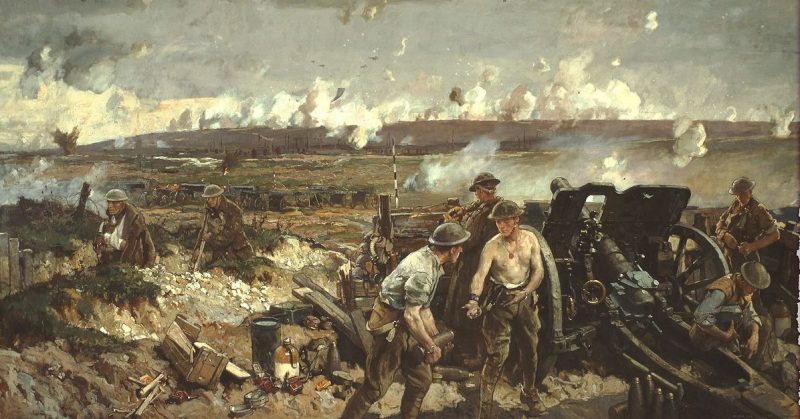As if asking for a blessing shortly before the assault on Vimy Ridge in France during the First World War, the Celtic-style cross erected on April 9, 1917 that had been on display at the visitor’s center for the 100th-anniversary commemoration stands as a tribute to Canada’s war dead.
Until last March, the wooden cross was hanging in a museum in the basement of a Toronto, Canada church.
Carved on its surface are the names of 57 Canadian servicemen, the majority from the 15th Battalion (48th Highlanders). Most died in the first hours of that attack.
It is one of the few surviving witnesses as well as a real-time incomplete record, of the substantial Canadian losses in the deciding opening minutes of the battle.
Since that war to end all wars, it has traveled across the ocean twice.
Although it commemorates the soldiers of one battalion, it is harkening back to relate the story of all the men who fought there, said Brig. Gen (retired) Greg Young, of the 15th Battalion Memorial project. It was his suggestion to Veterans’ Affair to transfer the cross to France. He always wanted to see the cross returned and, if only for a short time, raised again at the precise spot where so many lost their lives.
The 15th Battalion was assigned the job of taking the eastern edge of the ridge, which entailed moving over a longer distance, and traversing a greater number German lines than other Canadian units.
That meant a substantial number of casualties despite the fast advance. Young said most were killed by small arms and machine gun fire.
The battalion had two crude graves readied in advance for soldiers killed in action. The cross was fashioned by the battalion’s carpenter and used to spot one of those two locations.
At the opposite end of France, Johanne Gagne, a Vimy-based Veterans Affairs Canada project co-ordinator, had always longed to bring over one of the few extant battlefield crosses.
The precise circumstances are not known, but after the war, the cross was brought to Canada, and had for many years been on exhibit in the basement museum of St. Andrew’s Church, dedicated to the 48th Highlanders regiment.
A team of experts carefully removed the cross from its display to package it for the trip back to Vimy. Some of the relatives were invited to see it before the move. Their stories add life to the names.
Orlando Wilcox was a diamond setter and 27 at the time of his death. He was survived by a daughter and a twin who lived to be 96, according to Richard Merritt, his great nephew.
John Owens, his name was spelled incorrectly on the cross with an extra e, came from Ireland. He was an electrician on the Titanic before moving to Canada.
Relatives of both of those men inherited a legacy of photos and other relics, and a pistol in Wilcox’s case.
Scott Keen, began exploring his grandfather’s life a half-decade ago. Edwin Keen enlisted at the unusual age of 43, almost the same age as Scott, leaving behind his career as a bricklayer, his wife and four youngsters. The youngest was Scott’s grandfather. All he knows of him is based on information from the family.
Through research, Keen knows his great-grandfather was killed immediately by a bullet on April 9, 1917 between 5:15 and 5:30 a.m.
On Feb. 13, Air Canada red-eye flight 880 left Toronto with the carefully packaged cross in the cargo hold.
A reception committee composed of Simon Godly, the amateur historian and Gagne from Veterans Affairs were there to accept the delivery. Godly spent a considerable amount time pinpointing the exact location where the cross was raised, relying on war diaries and old maps, CBC News reported.
The spot is close to the edge of a farmer’s field. Vimy Ridge in the distance can barely be seen.
When the war ended, the soldier’s bodies were exhumed and transferred to the Arras-based Nine Elms Cemetery. The cross was also moved, and a photo has survived of it positioned near the gate like a guard. Prior to the cross being displayed, it was taken to the cemetery, reunited with the men whose names it has cherished for 100 years.
